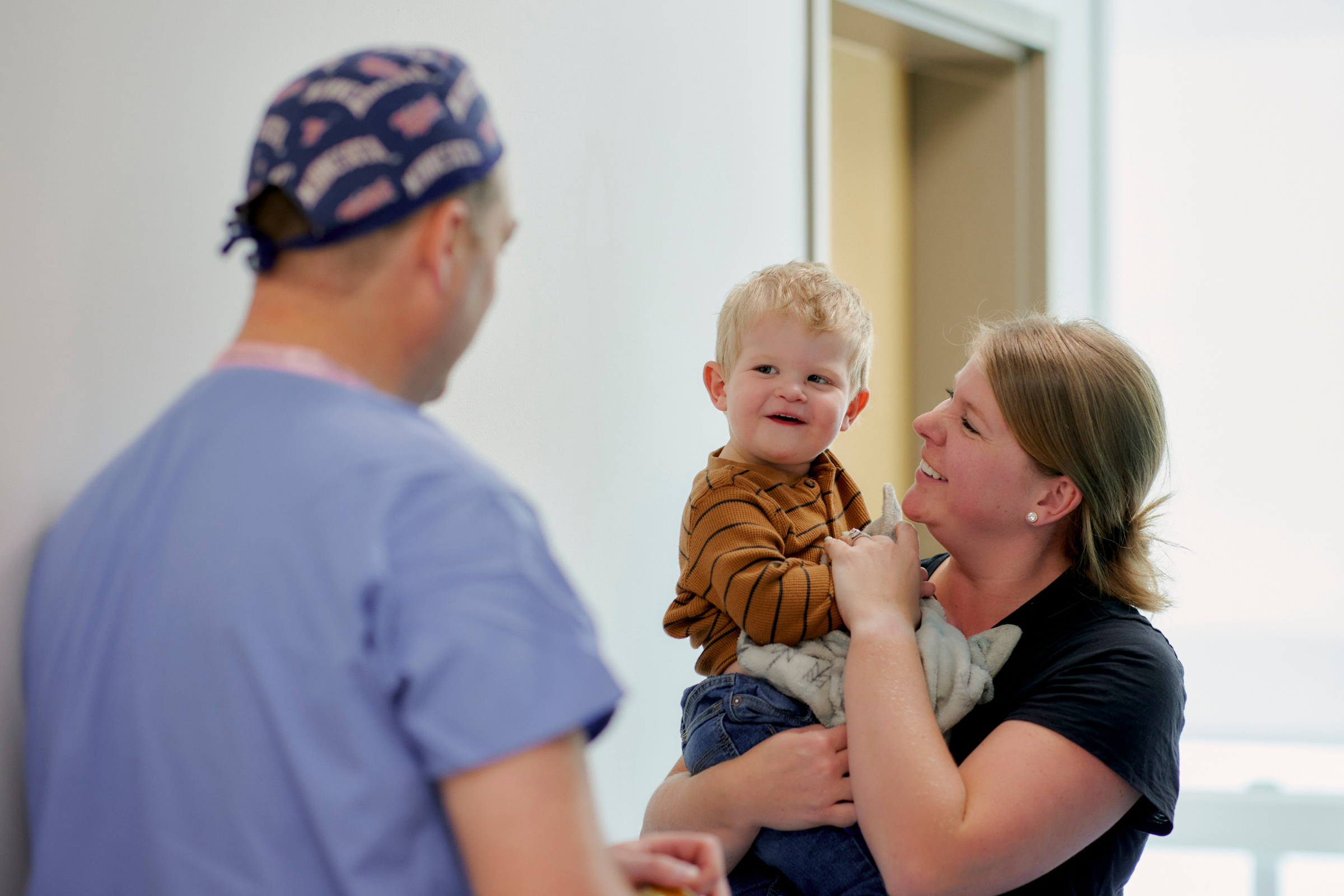On a warm day in May 2023, Emily Youngren dropped her then-14-month-old son, Henrik, off at daycare near their family farm in Waverly, Minnesota. A few hours later, she got a call and learned Henrik fell backward off a couch and hit his head on a carpeted concrete floor.
“When I got to daycare and saw him, I realized it was very serious,” Emily recalls. An ambulance rushed the toddler to the Level I Trauma Center at Children’s Minnesota in Minneapolis, 40 miles away from Waverly. The site is Minnesota’s only Level I pediatric trauma care center in a hospital dedicated solely to kids.
“Every minute is valuable with a brain injury,” explains Emily. “We are so thankful for the EMTs that made that important decision to go straight to Children’s Minnesota rather than our local emergency room and save every important minute.”
At Children’s Minnesota, a multi-disciplinary team of pediatric specialists assessed Henrik. Emily describes her son’s injuries as one in a million — he had a skull fracture and a severe brain bleed after his short fall.
The trapped blood surrounding Henrik’s brain caused dangerous swelling and pressure to build inside his skull. The damage was so severe, the toddler could have lost his ability to ever walk, talk, see with both eyes or eat independently again. The clock was ticking for Dr. Kyle Halvorson, pediatric neurosurgeon and member of the Level I pediatric trauma care team at Children’s Minnesota, to perform a craniectomy procedure.
Within minutes of arriving, Henrik was prepped for emergency surgery with Dr. Halvorson. The neurosurgeon removed a portion of the toddler’s skull to relieve the mounting pressure and swelling on his brain. Dr. Halvorson then performed a procedure to help excess cerebrospinal fluid drain and placed a temporary device to monitor the pressure in Henrik’s skull. The toddler spent 23 days recovering in the pediatric intensive care unit. There, The Kid Experts on the Children’s Minnesota PICU staff, physical and occupational therapy departments and other teams helped Henrik before his discharge.
Henrik returned home to his family farm, but his care journey was not over. Notably, he would need a custom skull plate surgically placed after his body rejected the piece of his skull removed during the emergency procedure. This temporarily left Henrik with a large area of his head unprotected under his skin.
This challenge called for both the ear, nose and throat team and neurosurgery program at Children’s Minnesota to design and place a custom plate to protect Henrik’s developing skull and brain. As a precaution, Henrik wore a special helmet with the words “farm boy tough” stenciled across it until his procedure. In October 2023, Dr. Halvorson successfully attached the plate made from a plastic-like medical-grade material over the open area of Henrik’s skull.
For now, Henrik will undergo routine follow-up care with the neurosurgery team at Children’s Minnesota to monitor his skull plate and brain development. Henrik is now walking, talking and showing no signs of the severe potential complications his care team and family originally feared. “His recovery so far has been miraculous,” says Henrik’s dad, Derek.
Children’s Minnesota’s neuroscience program is the focus of this year’s Children’s Minnesota Star Gala, the premier black-tie fundraiser for Children’s Minnesota. For more than 30 years, the philanthropic community in the Twin Cities has come together to raise millions of dollars for the nonprofit, which relies on generous donors to make possible the life-changing programs at Children’s Minnesota.






